This is a partial list of archeological sites in Korea, including both North and South Korea.

Samhan or the Three Kingdoms of Korea refers to the three kingdoms of Goguryeo, Baekje, and Silla. Goguryeo was later known as Goryeo, from which the modern name Korea is derived. The Three Kingdoms period is defined as being from 57 BC to 668 AD.
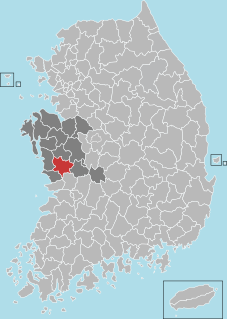
Buyeo County (Buyeo-gun) is a county in South Chungcheong Province, South Korea. Buyeo-eup, the county's capital, was the site of the capital of Baekje from 538-660 AD, during which it was called Sabi Fortress.
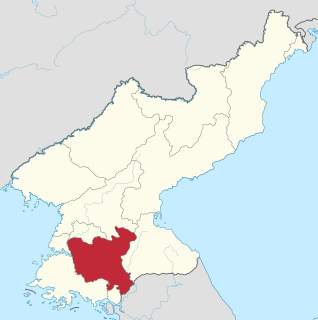
North Hwanghae Province is a province of North Korea. The province was formed in 1954 when the former Hwanghae Province was split into North and South Hwanghae. The provincial capital is Sariwon. The province is bordered by Pyongyang and South Pyongan to the north, Kangwon to the east, Kaesong Industrial Region and South Korea's Gyeonggi Province to the south, and South Hwanghae southwest. In 2003, Kaesong Directly Governed City became part of North Hwanghae. Later on in 2019, it was promoted as Special City. Thus, it was separated from North Hwanghae.

Goguryeo tombs, officially designated as the Complex of Koguryo Tombs, are tombs in North Korea. In July 2004, they became the first UNESCO World Heritage site in the country. The site consists of 30 individual tombs from the later Goguryeo kingdom, one of Three Kingdoms of Korea, located in the cities of P'yŏngyang and Namp'o. Goguryeo was one of the strongest ancient Korean kingdoms located in the northern and central parts of the Korean Peninsula and the southern and central parts of Manchuria. The kingdom was founded in the present day area of North Korea, and part of Manchuria around 37 BCE, and the capital was transferred to P'yŏngyang in 427 CE.

Earthen Fortification in Pungnap-dong, Seoul is a flat earthen wall built at the edge of the Han River in Korea. It has a circumference of 3.5 km. It is located in modern-day Pungnap-dong, Songpa-gu, Seoul. It used to be included in the neighboring city of Gwangju. It has a long oval shape, spreading to north and south, and leaning slightly toward the east. Based on research conducted during the Japanese occupation, it has been speculated that Pungnap Toseong was Hanam Wiryeseong, the first capital of Baekje.

A National Treasure is a tangible treasure, artifact, site, or building which is recognized by the South Korean government as having exceptional artistic, cultural and historical value to the country. The title is one of the eight State-designated heritage classifications assigned by the administrator of the Cultural Heritage Administration (CHA) in accordance with the Cultural Heritage Protection Act after deliberation by the Cultural Heritage Committee.
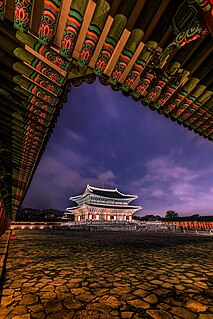
Korean architecture refers to an architectural style that developed over centuries in Korea. Throughout the history of Korea, various kingdoms and royal dynasties have developed a unique style of architecture with influences from Buddhism and Korean Confucianism.
Tourism in Gyeongju is a major industry and defining feature of Gyeongju, South Korea. Gyeongju is a major cultural site and tourist destination for South Koreans and foreigners with about 8 to 9 million visitors annually. A great deal of this is due to the city's status as a center of Silla heritage, derived from its former role as the capital of that ancient kingdom.
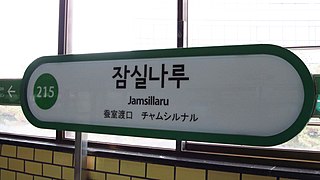
Jamsillaru Station is a station on the Seoul Subway Line 2. Its former name literally means "in the fortress," probably referring to the nearby Mongchon and Pungnap earthen walls, and it was also named from Seongnae-cheon. It is also the closest subway station to the Asan Medical Center.
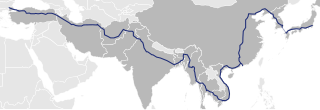
Asian Highway 1 (AH1) is the longest route of the Asian Highway Network, running 20,557 km (12,774 mi) from Tokyo, Japan via Korea, China, Southeast Asia, Bangladesh, India, Pakistan, Afghanistan and Iran to the border between Turkey and Bulgaria west of Istanbul where it joins end-on with European route E80, running all the way to Lisbon, Portugal.

Tourism in South Korea refers to the tourist industry in the Republic of Korea. In 2012, 11.1 million foreign tourists visited South Korea, making it the 20th most visited country in the world, and the 6th most visited in Asia. Most non-Korean tourists come from other parts of East Asia such as Japan, China, Taiwan, and Hong Kong. The recent popularity of Korean popular culture, often known as the "Korean Wave", in these countries has increased tourist arrivals. Seoul is the principal tourist destination for visitors; popular tourist destinations outside of Seoul include the major coastal city of Busan, the Seorak-san national park, the historic city of Gyeongju and subtropical Jeju Island. Traveling to North Korea is not normally possible without a special permission, but in recent years organized group tours have allowed groups of South Korean citizens to visit Mount Kumgang.
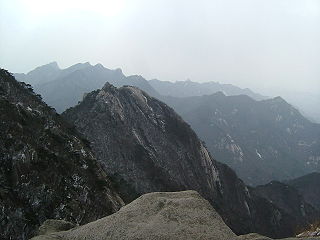
The Bukhansan National Park in Seoul and Gyeonggi covers an area of 79.92 km2 (30.86 sq mi) and was established on 2 April 1983. Bukhansan means "mountains north of the Han River."
Jeongjong of Goryeo was the 10th ruler of the Goryeo dynasty of Korea. He was the second son of Hyeonjong, and the younger brother of Deokjong. At the age of four in 1022, he was made Naesaryeong, a position of high rank, and designated the Prince of Pyongyang.

Korea has had a number of capitals. Korea is a peninsula in East Asia, currently the peninsula is divided into two countries: North Korea's capital is Pyongyang, and South Korea's capital is Seoul.

Pungnap-dong is a neighbourhood, dong of Songpa-gu, Seoul, South Korea.

The Tomb of King Dongmyeong, also known as the Tomb of King Tongmyŏng, is a mausoleum located in near Ryongsan Village, Ryokpo-guyok, Pyongyang, North Korea. One of the tombs is the royal tomb of Dongmyeong, the founder of the ancient Goguryeo Kingdom, northernmost of the Three Kingdoms of Korea. In total, there are 63 individual tombs of the period. The area around Dongmyeong contains at least fifteen known tombs believed to belong to various vassal lords. The tomb has achieved World Heritage status as part of the Complex of Goguryeo Tombs inscribed by UNESCO in 2004 under Criteria (i), (ii), (iii) and (iv) covering an area of 233 hectares with a buffer zone of 1,701 hectares. A unique feature of it and the other extant tombs in the area are the wall paintings depicting blossoming lotuses blossoming, an indicative of Buddhism practiced in Korea, in that period.
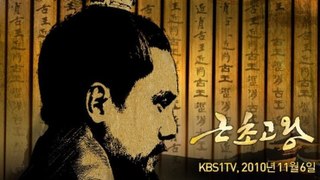
The King of Legend is a 2010 South Korean historical drama based on King Geunchogo of Baekje. Besides historical information from Samguk Sagi and Samguk Yusa, it was also inspired by a novel written by Lee Munyeol, a renowned Korean writer. The drama aired on KBS1 in Korea, and internationally through KBS World.

The Baekje Historic Areas are a group of monuments located in three South Korean cities: Gongju, Buyeo, and Iksan. They relate to the last period of the Baekje Kingdom, representing the period from 475 to 660 CE, which was one of the three kingdoms that flourished from 18 BC to 660 AD. The property designated as a UNESCO World Heritage Site has eight archaeological sites. These are: The Gongsanseong fortress and the royal tombs at Songsan-ri, related to the capital city of Ungjin, now Gongju; the Busosanseong Fortress and Gwanbuk-ri administrative buildings, the Jeongnimsa Temple, the Neungsan-ri royal tombs, and the Naseong city wall in Sabi, now Buyeo; and the Wanggung-ri Palace and the Mireuksa Temple in Iksan, a subsidiary capital region of Sabi.